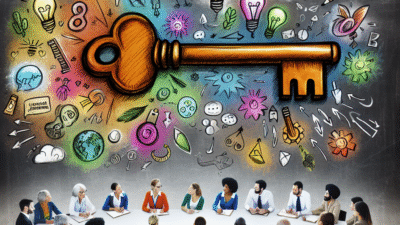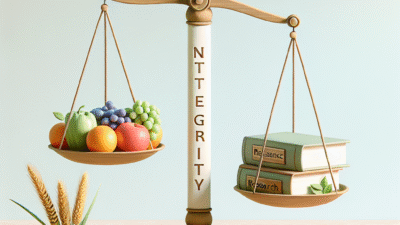Nurturing the Whole Child: Innovative Early Childhood Education Activities for Holistic Development
Introduction
In today’s rapidly changing world, early childhood education plays a pivotal role in laying the foundation for a child’s future learning and development. As educators, parents, and caregivers, it is our responsibility to foster an environment where children can thrive emotionally, socially, physically, and intellectually. This is where the concept of "Nurturing the Whole Child" comes into play, emphasizing holistic development as an essential component of early learning.
In this comprehensive guide, we will explore innovative early childhood education activities specifically designed to nurture the whole child. Your journey through this article will uncover the significance of holistic education, a plethora of actionable activities, and how to implement them effectively. By the end, you’ll not only understand the importance of nurturing the whole child but also have practical strategies and insights to enhance the well-being and growth of the young minds in your care.
The Importance of Holistic Development in Early Childhood Education
Understanding Holistic Development
Holistic development encompasses the emotional, social, intellectual, and physical aspects of a child’s growth. Each dimension interacts and influences the others, making it crucial for educators and parents to adopt a comprehensive approach.
- Emotional Development: This involves the ability to recognize and manage one’s own feelings and express emotions appropriately.
- Social Development: Social skills are vital for building relationships and understanding community dynamics. This includes sharing, cooperation, and communication.
- Intellectual Development: Cognitive skills, problem-solving abilities, and creativity fall under this umbrella. Intellectual development encourages curiosity and a love for learning.
- Physical Development: Fine and gross motor skills, coordination, and overall health are pivotal during early childhood.
Why Focus on the Whole Child?
The concept of nurturing the whole child aims to create balanced individuals who can adapt well to various life challenges. Research suggests that children who receive holistic education exhibit higher self-esteem, better social skills, and enhanced cognitive abilities. By nurturing every dimension of a child’s development, we prepare them not only for academic success but also for life beyond the classroom.
(Transformative Quote): “The greatest legacy we can leave our children is not money or material things, but rather the opportunity to live their lives fully and joyfully.” – Jack Canfield
Innovative Early Childhood Education Activities for Holistic Development
Now, let’s delve into a variety of innovative activities tailored to nurture each aspect of holistic development. These activities are engaging, fun, and effective, ensuring that learning is not only informative but also enjoyable!
1. Emotional Development Activities
A. Feelings Charades 🎭
Objective: Enhance emotional recognition and expression.
Materials Needed:
- Emotion cards depicting various feelings (happy, sad, angry, surprised, etc.).
How to Play:
- Divide children into small groups.
- Have each child draw an emotion card.
- Each child takes turns acting out their emotion while others guess what it is.
Benefits:
- Promotes understanding of varied emotions.
- Encourages empathy as children learn to recognize emotions in others.
B. Gratitude Tree 🌳
Objective: Foster appreciation and positive thinking.
Materials Needed:
- Large paper or cardboard tree trunk.
- Colorful paper leaves.
How to Create:
- Ask children to write or illustrate things they are grateful for on the leaves.
- Attach the leaves to the tree as they complete them.
Benefits:
- Encourages reflection on positive experiences.
- Boosts emotional well-being through gratitude practice.
2. Social Development Activities
A. Cooperative Games 🤝
Objective: Build teamwork and communication skills.
Materials Needed:
- Ropes, balls, or any simple outdoor equipment.
Example Activities:
- Tug-of-War: A classic game where children learn about cooperation and strategy.
- Obstacle Course: Set up a course that requires teamwork to navigate.
Benefits:
- Enhances cooperation and problem-solving skills.
- Strengthens peer relationships and communication.
B. Community Helpers Day 🏙️
Objective: Understand roles in the community and the importance of collaboration.
How to Implement:
- Invite community helpers (police officer, firefighter, etc.) to speak to the children.
- Engage in role-playing activities where children can act out different community roles.
Benefits:
- Broadens children’s understanding of societal roles.
- Helps develop respect and appreciation for others’ contributions.
3. Intellectual Development Activities
A. Wonder Journals 📖
Objective: Stimulate curiosity and creativity.
Materials Needed:
- Notebooks and art supplies.
How to Use:
- Encourage children to write or draw things they wonder about every day.
- Set aside time to discuss their discoveries in group sessions.
Benefits:
- Fosters a love for exploration and inquiry.
- Encourages critical thinking.
B. Storytime Exploration 📚
Objective: Enhance comprehension and analytical skills through literature.
How to Create:
- Choose diverse books that provoke questions and discussions.
- After reading, ask open-ended questions about the story.
Benefits:
- Develops listening skills and comprehension.
- Encourages expressive language through storytelling.
4. Physical Development Activities
A. Dance Party 💃
Objective: Improve coordination and motor skills through movement.
Materials Needed:
- Music and dance props like scarves or ribbons.
How to Implement:
- Create a safe space for dancing.
- Play different types of music and encourage various movements.
Benefits:
- Enhances gross motor skills while encouraging creativity.
- Promotes healthy physical activity in a fun way.
B. Nature Walk and Scavenger Hunt 🍃
Objective: Combine physical activity with environmental awareness.
Materials Needed:
- Checklist of natural items to find (leaves, rocks, flowers, etc.).
How to Do It:
- Take a guided walk outdoors, encouraging children to observe their surroundings.
- Have them check off items on their scavenger hunt list as they find them.
Benefits:
- Boosts physical fitness and observatory skills.
- Increases awareness and appreciation for nature.
Visuals to Enhance Understanding
Table 1: Overview of Holistic Development Domains
| Domain | Key Skills | Activities |
|---|---|---|
| Emotional | Recognition of emotions, self-regulation | Feelings Charades, Gratitude Tree |
| Social | Cooperation, communication | Cooperative Games, Community Helpers Day |
| Intellectual | Critical thinking, creativity | Wonder Journals, Storytime Exploration |
| Physical | Motor skills, coordination | Dance Party, Nature Walk and Scavenger Hunt |
Chart 1: Benefits of Nurturing the Whole Child
Conclusion
In nurturing the whole child, we not only cultivate a love for learning but also equip children with critical life skills that serve them well beyond the classroom. By incorporating innovative early childhood education activities tailored to emotional, social, intellectual, and physical development, we can build a foundation that supports their growth and well-being.
As you embark on this journey of holistic education, remember that the goal is not just to teach but to inspire. 💡 Always encourage curiosity, foster relationships, and celebrate the unique individuality of each child. Together, we can create an enriching environment that prepares our young learners for a bright and successful future.
FAQs
1. What is the importance of nurturing the whole child?
Nurturing the whole child ensures that all dimensions of a child’s development—emotional, social, intellectual, and physical—are considered, promoting balanced growth and well-being.
2. How can I implement holistic education at home?
Engage your child in varied activities that develop their emotional, social, intellectual, and physical skills. For example, encourage conversations about feelings, play cooperative games, and explore nature together.
3. What age is best for starting holistic education?
Early childhood (ages 0-8) is critical for holistic development. Starting activities early can significantly enhance a child’s growth trajectory.
4. Are there specific settings where holistic education is more effective?
Holistic education can be effectively implemented in schools, preschools, and home settings. The key is a supportive environment that encourages exploration and development.
5. Can parents and caregivers be trained in holistic education strategies?
Yes! Many workshops and courses focus on holistic education strategies for parents and caregivers, enhancing their ability to support children’s development effectively.
By implementing these activities and approaches, we take significant steps towards nurturing not just learners, but well-rounded individuals ready to face the challenges of life. Let’s commit to this journey together, and make a lasting impact on the future of our children. 🌟




